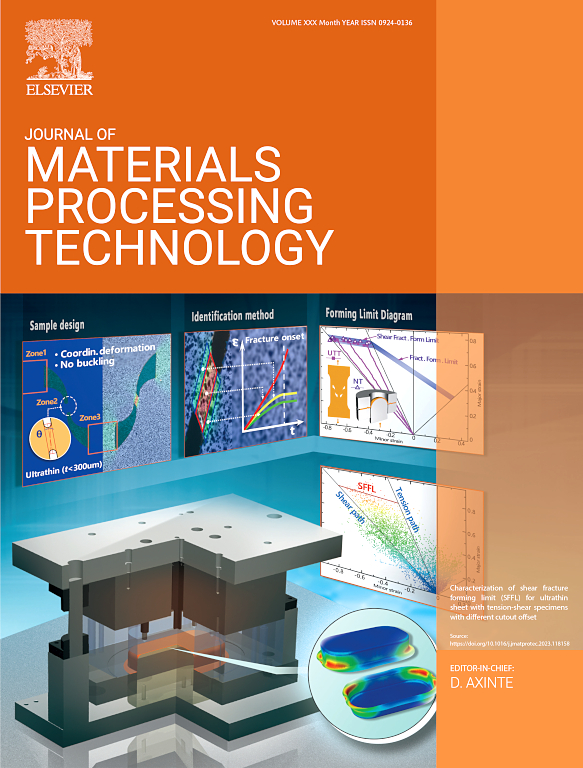Investigation on control of middle and high-spatial frequency errors of fused silica optics melt polished by CO2 lasers
IF 6.7
2区 材料科学
Q1 ENGINEERING, INDUSTRIAL
Journal of Materials Processing Technology
Pub Date : 2025-01-13
DOI:10.1016/j.jmatprotec.2025.118733
引用次数: 0
Abstract
Surface and subsurface defects introduced in traditional mechanical polishing seriously influence the laser damage threshold of fused silica. As a non-contact processing technology, CO2 laser melt polishing could obtain smooth surface by healing surface defects and cracks. However, due to the non-uniformity of the thermal interaction, the mid- and high-spatial frequency errors of the polished optic are pretty high, which seriously reduces the surface quality and even causes light field modulation. In this work, the formation mechanism of the mid- and high-spatial frequency errors of fused silica polished by lasers was explored through temperature and fluid fields multi-physics coupling simulation. Then, the factors influencing the mid-and high-spatial frequency errors were explored. The results showed that the errors of the optic were greatly influenced by the laser scanning speed and track pitch. Then, an innovative polishing strategy was proposed by combining multi-layer high-speed polishing with single-layer low-speed polishing. The mid- and high-spatial frequency error was reduced from 47 nm to 17.7 nm and the high-spatial frequency error was reduced from 8.4 nm to 1.5 nm compared with the previous results. This work revealed the formation mechanism of the mid- and high-spatial frequency errors through multi-physics coupling simulation and effectively controlled the errors by using an innovative polishing strategy. It can offer both theoretical and experimental advice for the ultra-precision machining technique employed on fused silica.
求助全文
约1分钟内获得全文
求助全文
来源期刊

Journal of Materials Processing Technology
工程技术-材料科学:综合
CiteScore
12.60
自引率
4.80%
发文量
403
审稿时长
29 days
期刊介绍:
The Journal of Materials Processing Technology covers the processing techniques used in manufacturing components from metals and other materials. The journal aims to publish full research papers of original, significant and rigorous work and so to contribute to increased production efficiency and improved component performance.
Areas of interest to the journal include:
• Casting, forming and machining
• Additive processing and joining technologies
• The evolution of material properties under the specific conditions met in manufacturing processes
• Surface engineering when it relates specifically to a manufacturing process
• Design and behavior of equipment and tools.
 求助内容:
求助内容: 应助结果提醒方式:
应助结果提醒方式:


